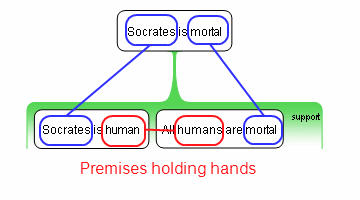The Science Of Scientific Writing Set 9 Set 9-Analysis maps • Second page • Example • Exercise 1 • Exercise 2 • Exercise 3 • Exercise 4 • Exercise 5 • Refinement Revisited • Rabbit Rule • Holding Hands Rule • Exercise 6 • Inference objections • Exercise 7 • Exercise 8 • Final.
OVERVIEW: The way to well-written science
PART I: Paragraphs and Sentences
SET A: Paragraphs: The Maps Behind Them
SET B: Paragraphs: Using Maps to Meet Readers' Expectations
SET C: Paragraphs with Something Extra: Points and Tails
SET D: The Generic Section: Expectations and Maps as Blueprints
SET E: Scientific Sections: The Methods and Results
SET F: Scientific Sections: The Discussion
SET G : Scientific Sections: The Introduction
SET H : Sentences
SET I : The Paper as a Whole
PART II: The Paper and its Sections
SET 1: Argument Parts
SET 2: Indicator Words
SET 4: Locating Arguments in Prose
SET 5: Rationale's Essay Planner
SET 6: Evidence in Arguments: Basis Boxes
Synthesis 1: Position-Early Paragraphs
Synthesis 2: Position-Final Paragraphs
Synthesis 3: Writing a Discussion I
Synthesis 4: Writing a Discussion II
The Holding Hands
Rule
Our final principle is the Holding Hands Rule, which says that if something appears in a premise but not in the claim above, it must appear in another premise. That is, premises need to hold hands with each other!
This classic, simple argument conforms to Holding Hands (as well as Rabbit).

Where the Rabbit Rule helps ensure that the claim is appropriately tied to the premises, the Holding Hands rule helps ensure that the premises are appropriately tied to each other.
Corresponding to the Holding Hands Rule there is the Holding Hands Test. This is a simple test to determine whether you have a properly structured argument. To apply the Holding Hands test, just examine the premises to see if there are any significant terms or concepts which appear there but not in the contention or any other premise. If there are any, the argument fails the Test.
Content of this page drawn in whole or part from the Austhink Rationale Exercises with permission from Austhink.